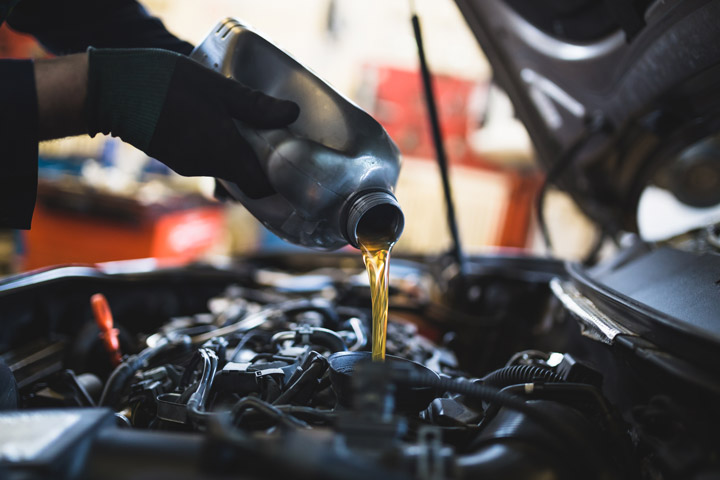All Categories
Featured
When it involves automobile upkeep, tires are frequently among the most neglected parts, although they play an important duty in the safety and security and effectiveness of your car. Tire turning and placement are two necessary services that aid guarantee your tires use evenly, last longer, and continue to perform at their finest. Below's whatever you need to know concerning tire rotation and positioning and why they matter for your lorry.
What Is Tire Turning? Tire rotation is the procedure of moving the tires from one setting to an additional to make certain even wear throughout all four tires. The front and back tires of a car wear at various prices as a result of the weight circulation and the reality that the front tires deal with both steering and braking. By rotating the tires regularly, usually every 6,000 to 8,000 miles, you can cancel the wear and expand the life of your tires.
In a lot of cars, the tires will be rotated from front to back, and in some cases, side-to-side, depending upon the tire kind and your vehicle's specs. This makes sure that each tire births an equal amount of stress and anxiety and pressure. Regular tire rotations additionally boost automobile handling and ride quality, along with contribute to better gas performance.
What Is Tire Placement? Tire alignment describes readjusting the angles of your auto's wheels to ensure they are positioned correctly according to the maker's specs. Correct placement guarantees that your tires are alongside one another and perpendicular to the ground, which assists improve the general handling, stability, and life-span of your tires.
There are three essential facets of placement:
Camber: The tilt of the wheels when watched from the front. If the wheels lean internal or exterior, it can trigger irregular tire wear. Caster: The angle of the steering axis when seen from the side. Correct wheel positioning guarantees stable steering and much better vehicle control. Toe: The angle at which the tires direct internal or outside when watched from above. Inaccurate toe positioning can trigger tires to wear erratically and impact handling. Misalignment can occur due to aspects like hitting craters, visuals, or driving over rough terrain, and also regular driving gradually can gradually trigger misalignment. Getting an alignment check every 1-2 years or when you notice handling troubles is necessary for optimum tire performance.
Why Are Tire Rotation and Positioning Important? Maximized Tire Life:. Tire rotation guarantees even use throughout all 4 tires, avoiding early tire substitute. Misaligned tires use unevenly, which can lead to the requirement for even more constant tire replacements. Both tire turning and placement raise the life expectancy of your tires, conserving you money in the long run.
Improved Safety And Security:. Appropriate placement aids maintain your lorry tracking directly, boosting stability and handling. Misaligned tires can result in pulling, which makes it harder to control your lorry, particularly at high speeds or in emergency scenarios. Tire turning also ensures your car's handling remains constant, boosting your capacity to quit swiftly and preserve control.
Better Fuel Efficiency:. When your tires are properly aligned, they experience much less moving resistance, implying your engine does not have to function as tough to move the vehicle. This decreases gas intake and improves gas mileage. Misalignment can cause your tires to drag, causing bad fuel effectiveness.
Smoother Ride:. Misaligned or unevenly worn tires can create vibrations in the steering wheel or vehicle body, which can be unpleasant while driving. Regular tire rotation and placement can provide a smoother and quieter adventure, reducing unneeded noise and vibrations.
Signs You Required Tire Turning or Alignment. It is very important to be mindful of cautioning signs that your tires could require attention. Watch out for:
Irregular Tire Put On: If you notice that a person tire is more worn than others, maybe a sign that it's time for a turning or alignment. Steering Pulling away: If your car pulls to one side, particularly when you're driving directly, it can show misalignment. Resonances or Unusual Sounds: If your wheel trembles or you hear a humming or grumbling sound, your alignment may be off. Squealing Tires: A high-pitched screech can signify imbalance or that your tires are put on erratically. If you observe any of these indicators, it's a great idea to have your car examined as soon as possible to protect against further damage to your tires or shock absorber.
How Often Should You Rotate and Align Your Tires? Tire rotation is generally suggested every 6,000 to 8,000 miles or every six months, relying on your automobile's handbook and driving conditions. It's also a good concept to turn your tires throughout oil modifications to ensure they get the attention they require.
For alignment, most experts suggest having your tires straightened annually or if you discover any type of handling issues. If you have actually recently struck a pothole, aesthetic, or an additional barrier, it's an excellent concept to have your alignment checked earlier to prevent uneven tire wear.

Conclusion: Maintain Your Tires for Durability and Safety and security. Tire rotation and positioning are easy yet crucial aspects of vehicle maintenance that add to longer tire life, boosted security, and far better fuel efficiency. By adhering to the advised solution intervals for tire turning and positioning, you can guarantee your tires remain in top problem, providing a smoother and safer driving experience. Routine upkeep helps you prevent unexpected tire wear, costly repair work, and prospective mishaps, making it a smart investment for your car's overall performance.
Latest Posts
Discover WyHy FCU – Comprehensive Support for Your Financial Success
Explore Brake Repair & More: Comprehensive Repair Options from Montclare Auto Repair
Why Consistent Auto Maintenance at Montclare Auto Repair Reduces Costs
More
Latest Posts
Discover WyHy FCU – Comprehensive Support for Your Financial Success
Explore Brake Repair & More: Comprehensive Repair Options from Montclare Auto Repair
Why Consistent Auto Maintenance at Montclare Auto Repair Reduces Costs
